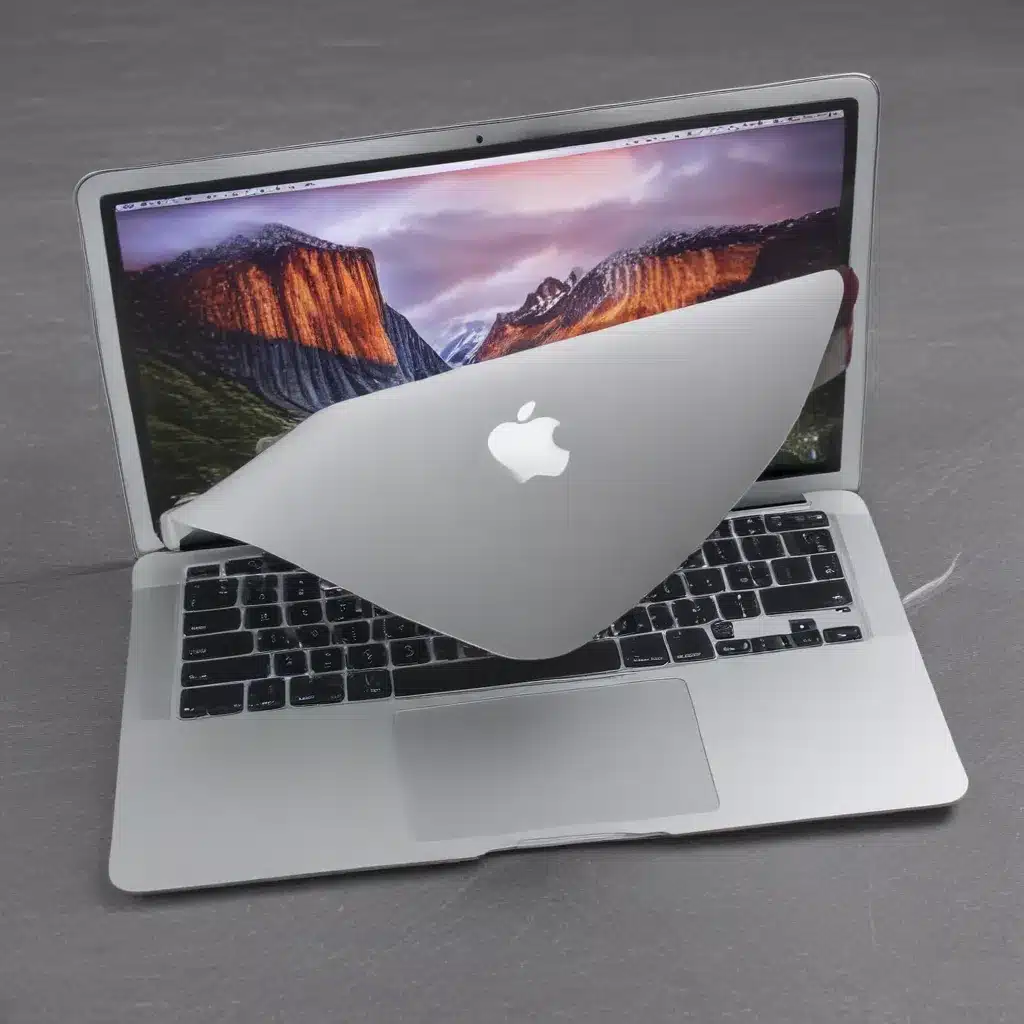Struggling with a Sluggish MacBook Air? I’ve Been There Too!
It happened to me just last month – I was happily working away on my trusty MacBook Air when suddenly, everything ground to a halt. Apps were taking forever to open, web pages were loading at a snail’s pace, and even simple tasks felt like wading through molasses. Sound familiar? If your MacBook Air has been running slower than a herd of turtles, you’re not alone.
As a long-time Mac user, I’ve experienced this issue more times than I can count. But the good news is, there are plenty of simple fixes to get your Mac up to speed again. In this in-depth guide, I’ll share the tips and tricks I’ve learned over the years to help speed up a sluggish MacBook Air. Whether you have an older model or the latest and greatest, these simple solutions can work wonders.
Diagnose the Issue: What’s Slowing Down Your MacBook Air?
Before we dive into the fixes, it’s important to understand what’s causing your MacBook Air to run slow in the first place. There are a few common culprits:
1. Too Many Background Processes
Even the mighty MacBook Air can struggle when you’ve got too many apps and processes running in the background. These hidden hogs can quietly gobble up your system’s resources, leaving little left for the tasks you’re actually trying to accomplish.
2. Outdated macOS or Apps
Just like any other computer, your MacBook Air needs regular software updates to keep it running at its best. An outdated operating system or old, buggy apps can significantly slow down your machine.
3. Malware Infection
While Macs are generally more secure than Windows PCs, they’re not immune to malware. A pesky virus or other malicious software could be bogging down your system.
4. Full Storage Drives
If your MacBook Air’s hard drive or SSD is close to capacity, that can also contribute to sluggish performance. All those files, photos, and documents take up precious storage space.
Once you’ve identified the root cause, you can start implementing the fixes to speed things up. Let’s get to it!
Simple Fixes to Supercharge Your MacBook Air
1. Tame those Background Processes
One of the easiest ways to speed up your MacBook Air is to reign in those resource-hogging background processes. Open up Activity Monitor (found in the Utilities folder of your Applications) and take a look at what’s running. If you see any apps or processes using a lot of CPU or memory, try quitting them or limiting their activity.
Pro Tip: Look out for any apps or processes with “helper” or “agent” in the name – these tend to be the sneakiest background hogs.
2. Keep macOS and Your Apps Up-to-Date
Outdated software is a common culprit of slow performance. Make sure you’re running the latest version of macOS by going to the Apple menu > System Preferences > Software Update. And take a quick scan of your installed apps – if any need updating, do it! Those updates often include important bug fixes and performance improvements.
3. Scan for Malware (Just in Case)
While Mac malware isn’t as prevalent as on Windows, it’s still a good idea to do a quick scan. I recommend using a reputable anti-malware tool like Avast Security for Mac [1]. It’ll quickly check your system for any nasties that could be bogging down your MacBook Air.
4. Free Up Storage Space
If your MacBook Air’s storage is full or nearly full, that can really slow things down. Start by deleting any files, photos, or documents you no longer need. You can also use a tool like Avast Cleanup for Mac [2] to automatically identify and remove junk files, duplicate downloads, and other storage hogs.
5. Restart, Restart, Restart
Sometimes, the simplest solution is also the most effective. If your MacBook Air has been running slow, try giving it a good old-fashioned restart. This can clear out temporary files, implement any pending software updates, and generally give your system a fresh start.
I know it’s not the most exciting fix, but a simple restart can work wonders!
Turbocharge Your MacBook Air with These Bonus Tips
Manage Your Startup Items
Take a look at what programs are set to launch automatically when your MacBook Air boots up. The more you have, the longer it’ll take to get going. Head to System Preferences > Users & Groups > Login Items to remove any unnecessary startup items.
Optimize Your Energy Settings
Your MacBook Air’s energy settings can also impact performance. Go to System Preferences > Energy Saver and make sure the “Reduce the computer’s sleep” option is enabled. You can also experiment with lowering the display’s brightness to save resources.
Keep an Eye on Your RAM Usage
If your MacBook Air seems to be constantly struggling, it could be a sign that you need more RAM. Open Activity Monitor and keep an eye on your system’s memory usage. If it’s consistently high, you may want to consider upgrading your RAM.
Wrapping Up: Enjoy a Speedier MacBook Air Experience
There you have it – my top tips for supercharging a sluggish MacBook Air. By tackling those background processes, keeping your software up-to-date, and freeing up storage space, you can breathe new life into your trusty Mac.
And remember, if you ever find yourself stuck or need a little extra help, don’t hesitate to reach out to a reputable computer repair service. They’ll have the expertise to diagnose and fix any issues, so you can get back to a lightning-fast MacBook Air experience.
Happy computing!
[1] Avast Security for Mac: https://www.avast.com/en-gb/antivirus-for-mac
[2] Avast Cleanup for Mac: https://www.avast.com/en-gb/cleanup-premium#pc













